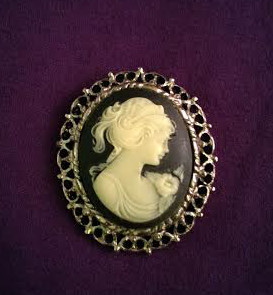Although the Victorian Era was named for Queen Victoria of England, I've also included games and information from the United States around that time because the two countries had similar pastimes.

The Victorian Era lasted from 1837, when Queen Victoria assumed the throne as a young woman, to 1901, when she passed away. It was a time of great social changes and technological innovation as England became a more industrial nation and less focused on agriculture (Mitchell, Daily Life xiii-xiv). One of the changes taking place in society was the growth of the "middle class" between wealthy aristocrats who didn't need to work for a living and the lower classes who did manual labor (Mitchell, Daily Life 18, 20). People in the middle class were "white-collar" workers, people whose work was more mental than physical like teachers, clerks, managers, and engineers. Because these people didn't need to work with their hands as much, they could keep their clothes cleaner during the day than those performing manual labor, hence the term "white-collar." These professions weren't completely new to the Victorian Era, but during this time, their numbers significantly increased (Mitchell, Daily Life xvi, 18, 20). Similar changes were also taking place in other countries, like the United States (Schlereth xi).
Society was becoming more urban-centered around this time, and middle-class families had higher incomes and more leisure time (Hofer 13). In rural villages, people would seek companionship and entertainment at the village hall or inn, but the urban middle class of the Victorian era more frequently entertained themselves and their friends in the private parlors of their own homes. Party games that had been popular in the large houses of wealthy families became increasingly popular in suburban homes (Beaver 14). Games that were once often drawn on the ground when played in rural areas, like Nine Men's Morris, became commercially-produced board games (Beaver 14-15).
Many of the foundations of what we think of as classic board games, party games, and other pastimes were established during this period of history. You will notice that there are many games here from earlier periods of history, new twists on older games, and some new inventions.
Board Games
The late 1800s can be considered "the golden age of board and table games" (Hofer 11). Board games became more popular in the U.S. around the beginning of the Civil War, in the early 1860s, as people looked for pleasant ways to amuse themselves and escape from the turmoil around them (Hofer 21). Also, new printing techniques allowed companies to create a wide range of board games at prices that families could afford (Hofer 14). In the first part of the 19th century, Americans played games that were manufactured in England or ones that they made based on English games, but toward the end of the 19th century, American companies began to make more games of their own design that reflected American culture (Hofer 18).
Some of the games played during the Victorian Era were from earlier periods, like Chess and Checkers (McCutcheon 192). Other board games developed during the Victorian era were based on different themes. There were many games with educational themes such as quiz games about history, literature, and geography. Some board games were themed on nursery rhymes and fairy tales, often teaching a moral along with the story (Hofer 54). Many of the earliest board games in the U.S. emphasized Christian morality, rewarding players who landed on squares designated as specific virtues, including honesty and humility (Hofer 77). Later, during the 1880s, the U.S. experienced a period of economic prosperity, and more games began to emphasize the acquistion of material wealth (Hofer 78).
Another impact of the American Civil War was a rise in spiritualism. The concept of spiritualism existed prior to the Civil War, but many people had lost loved ones during the war and turned to spiritualism as a way to reconnect with those they had lost (Spiritualism). Like many other changes taking place in society, this fascination for the occult found its way into board games. Fortune-telling games became popular (Hofer 26). One of the most famous of these fortune-telling board games was the Ouija board, which was first marketed to the American public in 1891 with the claim that it could provide answers “about the past, present and future with marvelous accuracy” (The Strange and Mysterious History of the Ouija Board). The question of exactly how the Ouija board provides these answers seems mysterious. To those who have played with this toy, it seems like the planchette that points to letters of the alphabet to spell them out seems to move of its own accord, have left many people for generations worried that the Ouija board might have real supernatural connections, allowing for communication with the devil or demons. The reality is that this "game" makes use of a psychological trick and movements that the human body can make even when the person doing it is unaware of it called the "ideomotor effect" (How Ouija Boards Work). (Even so, I'm not providing a Ouija board here. I've never played with one because they're dang creepy, and if I'd likely just be subconsciously providing the answers to all of my own questions anyway, I don't feel like I need to buy a board for that.)
There were also some games that focused on structured conversations, which shows how people at the time favored controlled social situations (Hofer 26). For instance, there were conversation card games that were used as ice breakers for courting couples. They were meant to be humorous and romantic and take some of the awkwardness out of flirting for shy people (Hofer 39). They functioned almost like a version of Cards Against Humanity in that one person would put down a question and the other would put down an answer, except that they were much more polite, with no shock value. (I've acquired a set of these, so there will be more about this topic later.)
There will be descriptions and rules of Victorian board games here, but I need more time to prepare the boards. Coming soon!
Card Games
People in Victorian times played a wide variety of card games. Aside from the games described below, Whist was also popular (Schlereth 210). In fact, Whist was the most popular card game of the Victorian Era (Mitchell, Daily Life 231). Its descendent, Bridge, was invented around 1896 (Morehead and Mott-Smith 1). I decided not to cover Bridge here because the rules for bidding are complicated and depend on which convention the players are using. Entire books have been written on the subject. Personally, I recommend that anyone who has never played Bridge but wants to learn should try Whist or All Fours first in order to get used to the concept of winning "tricks" without the more complicated methods of bidding.
There are card games for both adults and children here. Old Maid, Snap, and Authors were (and still are) popular with children. Although Poker is a gambling game, the gambling aspect of it is avoidable, if you just want to enjoy the form of the game, and I give suggestions for that.
Solitaire card games were also played during the Victorian era, but they were called games of "Patience" rather than Solitaire. Lady Adelaide Cadogan is usually credited with creating the first published collection of Patience games in English titled Illustrated Games of Patience. (Available online through Project Gutengerg because it's now in the public domain.) Among the Soltaire games included in that collection are some that are still popular today, including Klondike, La Belle Lucie, and Clock.
However, that doesn't mean that it was the first book about Solitaire in the world. The first known published reference to Patience was German, dating from 1783. There are references to an earlier Patience book in English from 1860 credited to "Perseverance", which was a pseudonym used by William Henry Cremer. This book is not as well-known as Lady Adelaide Cadogan's book because there are apparently no surviving copies. We only know of its existence because it is referenced in the bibliographies of other works. There are many forms of Solitaire still popular today, and there are many places online where you can play Solitaire for free, including, SolitaireX and solitaired.com.
Parlor Games
The Victorian Era can also be considered the golden age of parlor games (Beaver 14). Until 1825, there hadn't even been any books that described the rules of parlor games (Beaver 15). My main sources for the parlor games are Victorian Parlor Games by Patrick Beaver and Kate Greenaway's Book of Games, which was originally published in 1889. There was such a wide variety of games played during the Victorian Era that I couldn't even begin to list all of them here, but these books and others mentioned in the bibliography section can give you further details on others.
All of these are good party games, and most of them can be played by children, especially the ones in Kate Greenaway's book, which were specifically for children. In fact, there are many games here that you will recognize from children's birthdays and others that have become car trip games (especially in the section of talking games). But, parlor games in the Victorian Era weren't just for children. Adults played these games as well, and some of them would still be entertaining and challenging to adults today. To make it easier to find games that suit your tastes, I have them grouped by theme.
Many parlor games require losers to pay a "forfeit", which involves performing a silly stunt for the amusement of the other players as a penalty for losing a game or a round in a game. Forfeit stunts are often like the dares in a game of Truth or Dare. There is a special section at the end of the parlor games where I discuss different types of forfeits. Some forfeits can involve kissing, and I mention those. The Victorians did play kissing games, although I don't really discuss them here. (Partly because the kissing games I read about turned out to be surprisingly boring. You wouldn't think it, but it is possible.) It's possible to use kissing forfeits to turn a regular parlor game into a kissing game, but I wouldn't recommend it unless your guests are comfortable with the idea. There are many different types of parlor games and many possible options for forfeits, so select the ones that your guests would enjoy the most.

